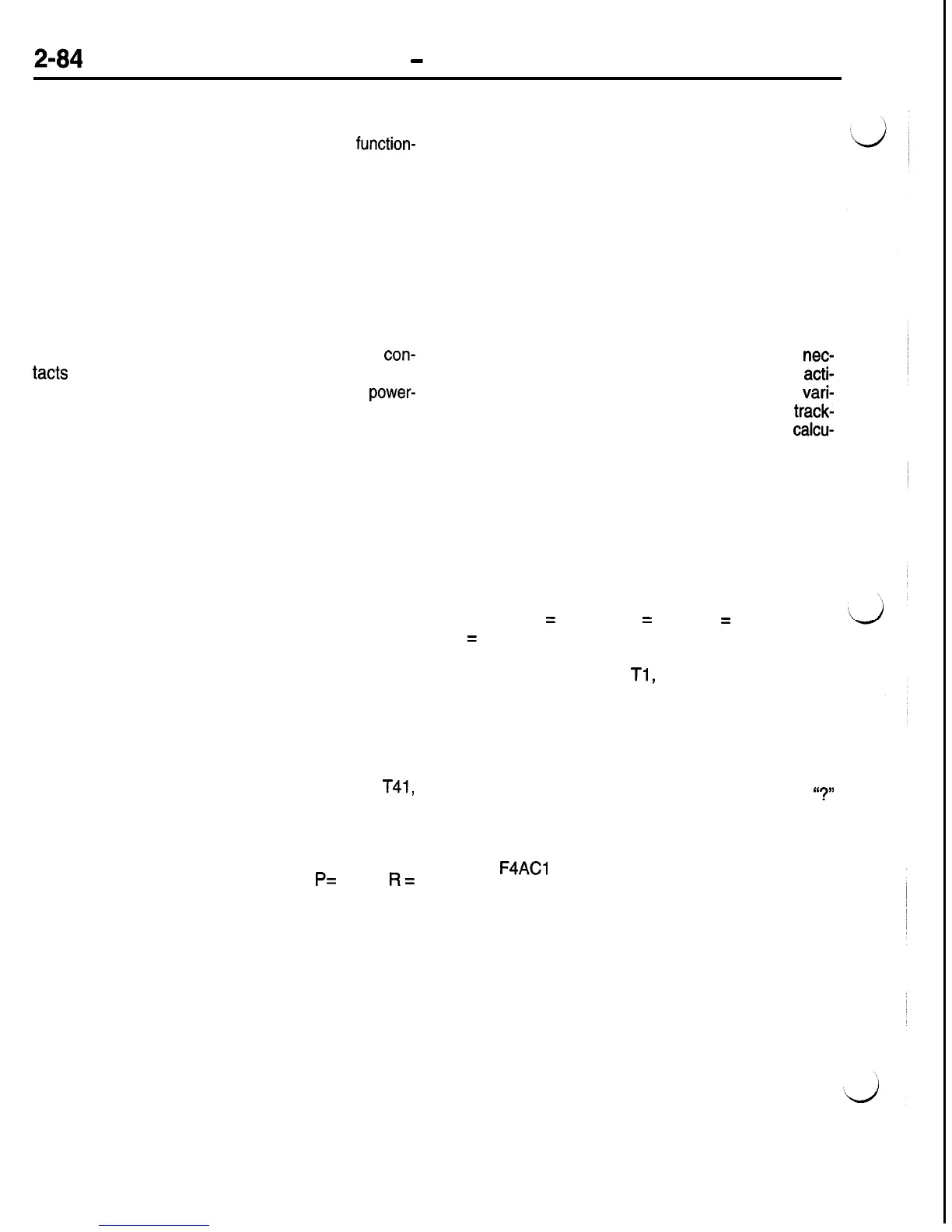POWER TRAIN
-
Automatic Transaxle
Random Access Memory (RAM)
One of the start routine checks is to verify that the
data storage bits in each RAM location are
function-
ing properly. RAM is a form of memory that can
Read Only Memory (ROM)
A ROM check also occurs during the start routine.
The check is to verffy that all of the data stored
in the ROM is valid. ROM is a permanent memory
be written to and changed, as well as read from.
Code 17 is reported with a failure of RAM.
in the TCM and is used to store the programs needed
to run the system. Code 16 is reported with a failure
of ROM.
Transmission Control Relay and Driver Circuit Continuity Checks
Prior to power-up, the relay contacts should not
be passing current (relay open). Code 14 is reported
for each solenoid. Codes 41 through 44 are reported
with a failure of the transmission control relay
con-
with a failure of any one solenoid.
tacts
(stuck closed).
After completion of the Start Routine, all of the
nec-
All three pressure switch inputs should be in a
power-
essary control logic variables are reset prior to
acti-
off condition. Code 20 is reported with a failure
vating the main control program. Some of the
vari-
of any pressure switch (switch closed, indicating
ables that require resetting are clutch volume
track-
pressure when none exists).
ing values set to zero, initial speed values are
calcu-
With the above checks all valid, the TCM then closes
lated, various counters and timers are cleared, and
the relay and verifies that the relay contacts are
shift logic selection is set to neutral.
passing current. Code 15 is reported if this fails
For the first few seconds of main program execution
(relay contacts never close).
following start up, the pressure switch checks are
With the transmission control relay contacts closed,
not performed. This allows time for the transaxle
the TCM then confirms the driver circuit continuity
oil pump to develop pressure and purge the air
from the various hydraulic circuits.
Park/Neutral Position and Transmission Range Switch Logic
This logic function reads the switch positions of
the transmission range and park neutral position
switches on the manual lever (rooster comb) to de-
termine the driver-selected operating mode.
The primary input for shift lever position to the TCM
comes from the transmission range and park neutral
position switches. The logic in the TCM for these
switches reads the four bit code determined by the
switch positions. When closed, each switch provides
ground for the particular circuit it is in (TI, T3,
T41,
T42). The status of these switches is based on
shift lever, manual valve and rooster comb positions
which determines the logic output code.
Reverse, N
=
Neutral, D
=
Drive, 2
=
Second, and
L
=
Low. There are also some transition codes that
occur between switch positions that are recognized
by the TCM. They are
Tl,
T2, and T3. An I code
also exists as an invalid code.
These logic output codes are then used by the Shift
Lever Position (SLP) logic in the TCM.
NOTE
The scan tool (MUT-II) does not recognize the differ-
ence between transition and invalid codes. A
“?”
on the display screen, of the scan tool (MUT-II),
is used to represent these codes when they are
present. They can occur between shift lever posi-
tions.
F4ACl
Transaxle Electronics
The output signal may be any of the following, de-
pending on the logic output code.
P=
Park,
R
=

